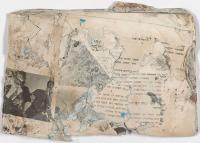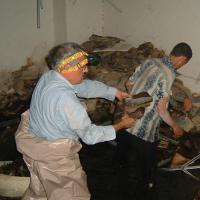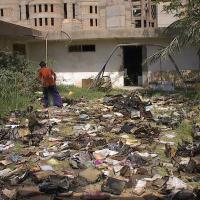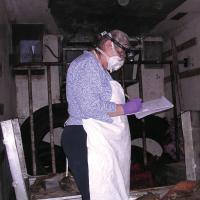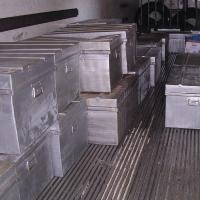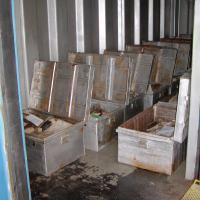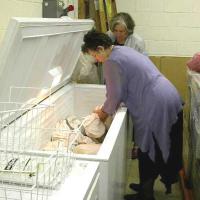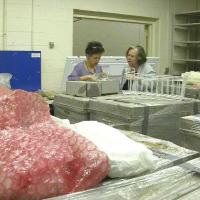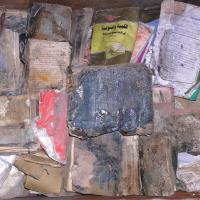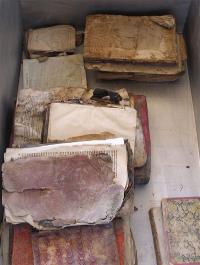Discovery & Recovery

Flooded Basement of the Mukhabarat, Saddam Hussein's Intelligence Headquarters, May 2003. Photo courtesy of Harold Rhode
Discovery
On May 6, 2003, the 16 American soldiers from Mobile ExploitationTeam Alpha, a group assigned to search for nuclear, biological, and chemical weapons, entered the flooded intelligence headquarters. The basement housed thousands of documents and books that were under four feet of water. A room in the basement was devoted to materials related to Iraq’s Jewish community. Many soon realized the importance of this unlikely survival of books and manuscripts, which are part of the legacy of Iraqi Jewish experience. In the hot and humid Baghdad climate,the wet materials quickly became moldy despite efforts to dry them. The Coalition Provisional Authority arranged to store the materials in a freezer truck to stop further mold growth. They also requested the assistance of the National Archives and Records Administration inWashington, DC, which sent preservation experts to Baghdad in June 2003. Local options in Baghdad to dry and care for the materials were limited, so with the agreement of Iraqi representatives,the books and documents were shipped to the United States for preservation and exhibition, after which they will be returned to Iraq—the full process to be completed in 2014. A catalogue of all materials with digital images of unique items will be available online and accessible internationally through the National Archives website.
Trunks
These metal packing trunks were used to house the wet books and manuscripts soon after they were discovered in the intelligence headquarters. The books and documents were shipped in 26 trunks to the National Archives and Records Administration in Washington, DC, for preservation of the collection.
Efforts to Recover and Begin Identifying Material, 2003
The Recovered Books & Documents
Over 2,700 Jewish books and tens of thousands of documents were recovered. The recovered books and documents, dating from the mid-16th century to the 1970s, became known after their discovery as the Iraqi Jewish Archive. The material includes a selection of traditional Jewish books, many printed in Baghdad in the late 19th or 20th century, but others imported from Hebrew printing centers worldwide. It remains unclear exactly how and why these documents and books were initially taken from synagogues and communal organizations or what the Mukhabarat hoped to learn from these Jewish community records and religious texts. Almost all the recovered documents relate to Baghdad Jewish communal organizations, such as the Chief Rabbi’s office, hospitals, and schools. The recovered documents are of particular importance for the understanding of Iraqi Jewish experience in the second half of the 20th century.

